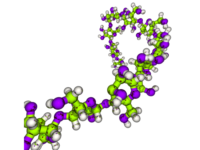
Why is NSP not a nutrient?
NSP is an acronym that has a lot of meanings. But in terms of food and health, it stands for non-starch polysaccharideâ€.
Non-starch polysaccharide is a dietary fiber which is sometimes called roughageâ€. It is the element that is present in most of plant-based foods that are considered indigestible and are divided into two which are soluble fiber and insoluble fiber.
On one hand, soluble fiber combines itself with the fatty acids present in the body. It lengthens the stomach’s time to empty itself so that sugar in food are released and are absorbed by the body little by little. A soluble fiber helps in regulating blood sugar among diabetics and reduces the risks of developing heart disease through lowering the level of bad cholesterol. Soluble fiber can be seen in foods like barley, dried beans and peas, flax seed, oats, nuts, fruits like apples and oranges, and vegetables like carrots.
On the other hand, insoluble fiber passes through the intestines in bulks which helps balance and regulate the acidity level in the intestines. It is responsible for the prevention of constipation and promotion of regular bowel movement. It helps remove toxins inside the body in the form of stool and help lower the risk of having colon cancer. Insoluble fiber are present in foods like corn bran, whole-wheat products, fruit and vegetable skins, green and dark green leafy vegetables, seeds and nuts.
Because fibers are undigested and are not absorbed into the bloodstream, NSP is not considered a nutrient. In contrast to NSP, a nutrient (according to Wikipedia) is defined as substances that enrich the body†which are digested from the food that people take in. And it is a chemical that an organism needs to live and growâ€. Although NSP is excreted from the body instead of being used as a source of energy like the nutrients, it still remains healthy and beneficial for the many reasons stated above.











Leave a Reply